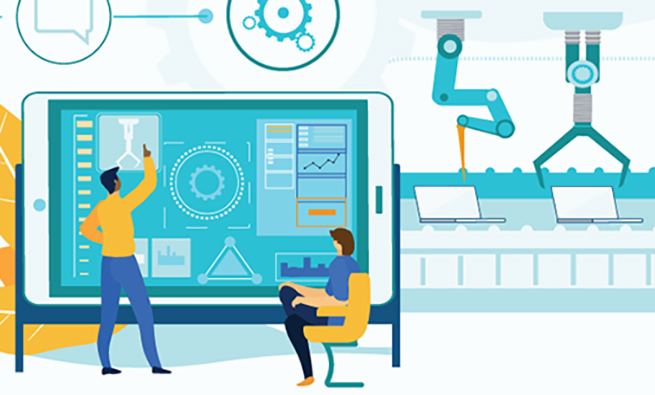Lean manufacturing is a business model focused on maximizing productivity and efficiency by eliminating waste.
But what exactly does “lean” mean and how does it create a lean environment?
This article will explore the principles behind lean and how it transforms organizational culture.
What Is Lean Environment?
Lean environments focus on maximizing value and minimizing waste through cultural transformation.
They empower employees to identify and eliminate waste through continuous improvements to processes and workflows.
Key Points
- Lean aims to deliver maximum value with minimum waste
- It requires cultural change at all levels
- Employees are empowered to improve processes
Why is Waste the Enemy of Lean?
At the heart of lean is the relentless pursuit to eliminate all forms of waste, known as “muda” in Japanese.
This waste can take many forms, including:
- Overproduction of products people don’t want
- Waiting around for approvals or decisions
- Unnecessary processing steps that don’t improve the product
- Excess inventory sitting unused
- Excessive transportation of goods
- Employee motion that doesn’t add value
- Production of defective parts or products
By systematically identifying and eliminating waste, lean organizations can boost productivity and free up resources for more value-added work.
What Are the Key Principles of Lean?
Lean is based on five key principles:
- Identify value from the customer’s perspective – Focus on what they find valuable.
- Map the value stream – Visually map out the production process end-to-end.
- Create flow – Eliminate bottlenecks so work can flow smoothly.
- Use a pull system – Let customer demand pull the product through.
- Pursue perfection – Continuously improve processes.
Organizations must embed these principles into their culture and empower staff at all levels to identify and eliminate waste through continuous improvement.
How Does Lean Transform Organizational Culture?
For lean to take root, an organization must undergo a cultural shift at all levels.
Leaders must be fully committed and willing to give employees the tools and authority to identify waste and make improvements.
Lean cultures value:
- Flexibility and cross-training over rigid roles
- Teamwork over departmental silos
- On-the-floor knowledge of top-down control
- Small experiments over big, risky changes
- Long-term thinking over short-term gains
This cultural transformation empowers employees to take ownership of improving processes.
It gives them a voice in shaping how work gets done.
What Are Some Key Lean Tools and Methodologies?
Lean provides various tools and frameworks to eliminate waste:
- 5S – A system for efficiency and organization
- Kanban – Signals that trigger action as needed
- Poka-yoke – Designing mistakes out of processes
- Visual controls – Signs, and displays to guide work
- Kaizen – Continuous improvement activities
- Value stream mapping – Tracks flow of material and information
Concepts like Six Sigma and just-in-time production complement lean by boosting quality and efficiency.
When combined, these methodologies create a lean environment.
How Does a Lean Environment Optimize Workflows?
In a lean environment, workflows are designed to maximize value and minimize waste.
Cross-functional teams map out workflows from start to finish to identify opportunities to:
- Eliminate redundant approvals or hand-offs
- Simplify complex processes into straight-line flows
- Remove bottlenecks slowing things down
- Smooth unevenness and inconsistencies
- Address overburdened people or processes
Visually mapping the flow makes waste glaringly obvious.
Teams can then redesign workflows to optimize value delivery.
Why Does a Lean Environment Require Less Space?
Lean workspaces only contain what’s essential to create value for the customer.
Unnecessary materials, equipment, and inventory waste space and tie up cash flow.
In lean environments:
- Inventory is kept low through just-in-time delivery
- Tools are organized and close at hand
- Floor space is open with clear visual controls
- Workstations are flexible to adapt to changing needs
With less clutter and excess, people can move and interact efficiently to get work done faster.
How Does Lean Empower Employees?
Lean organizations invest heavily in frontline employee training and engagement.
Workers learn how to identify waste in processes, run improvement projects, and contribute ideas.
Soliciting on-the-floor knowledge uncovers issues that managers miss.
Daily huddles and visibility boards provide transparency into problems affecting performance.
Employees are encouraged to raise concerns and collaborate to eliminate waste.
This autonomy and teamwork create a sense of shared purpose.
Workers gain pride and ownership knowing they directly contribute to the company’s success.
Why Must Lean Be Sustained Over the Long Term?
Many organizations make the mistake of trying to implement lean with short-term cost-cutting goals.
But lean is not a one-time project – it requires an ongoing cultural shift.
Sustaining lean over the long term requires:
- Patient, capable leaders who empower employees
- Willingness to invest time and resources into training
- Openness to experimentation and learning
- Acceptance that change takes time
Organizations must support lean initiatives even when profit margins are high.
They should rely on key performance indicators, not budget cuts, to drive continuous improvement.
What Is Meant of a Lean Environment?
A lean environment refers to a workplace that has adopted and implemented lean manufacturing principles.
The focus is on maximizing value and minimizing waste through continuous improvement.
In a lean environment, everything is geared towards eliminating non-value-added activities and streamlining operations.
Visual controls, 5S, Kanban, and other lean tools are used to optimize workflows.
Employees are empowered to identify areas for improvement on the frontlines.
The culture embraces cross-training, teamwork, and a long-term mindset.
Workspaces contain only the essential materials and tools needed to deliver value efficiently.
Overall, a lean environment is one where lean thinking permeates all aspects of operations and the organizational culture.
What Is the Basic Concept of Lean?
The basic concept behind lean is relentlessly eliminating waste from operations to improve flow and efficiency.
Waste takes many forms, including overproduction, waiting, unnecessary processing, excess transportation, excess inventory, excess motion, and quality defects.
The core principles of lean are:
- Focus on value from the customer’s perspective.
- Map out the value stream from end to end.
- Create continuous flow wherever possible.
- Let customer demand pull products through the system.
- Continuously improve processes through kaizen.
Lean thinking represents a new management approach – moving from batch-and-queue push systems to smoother pull systems focused on flow.
The emphasis is on visibly identifying waste and empowering staff to develop countermeasures.
Lean concepts can transform outdated hierarchies into flexible, team-based cultures.
What Are The Benefits Of Lean Thinking For The Environment?
There are several ways lean thinking benefits the environment:
- Reducing overproduction decreases raw material use and waste generation
- Lower inventories mean less warehouse space, transportation, and energy usage
- Smoother workflows minimize energy-intensive stop-and-go operations
- Less rework and defects cut waste and scrap material
- Just-in-time delivery eliminates packaging/stocks from overproduction
- Visual controls and 5S improve organization and housekeeping
- Equipment effectiveness improves through total productive maintenance
- Standard operations conserve water, electricity, gas, and chemicals
Overall, Lean’s emphasis on waste reduction directly correlates with environmental gains.
Organizations can leverage lean to minimize their environmental footprint across value streams.
In Summary
Lean manufacturing aims to maximize value and minimize waste through cultural transformation.
It empowers employees by giving them a voice in improving processes.
Lean provides various tools and frameworks to create optimized workflows that require less space and inventory.
By embracing lean thinking for the long haul, organizations can build dynamic cultures focused on sustaining continuous improvements over time.
FAQ
How Does Lean Reduce Inventory Waste?
Lean organizations keep inventory low through just-in-time delivery from suppliers. They only order what is needed to meet demand versus stockpiling excess. This frees up cash otherwise tied up in inventory.
What Lean Metrics Can Organizations Use?
Organizations can use metrics like processing time, quality, inventory turns, and on-time delivery to drive continuous improvement. These key performance indicators shine a light on waste.
How Can Lean Thinking Help The Environment?
By reducing overproduction and material waste, lean can decrease an organization’s environmental footprint. Eliminating excess inventory and transportation conserves resources and energy.
GreenChiCafe is passionate about the environment and our natural world. Check out our website for more content on living and operating sustainably.

Annie is a passionate environmental writer and activist. She has been writing about sustainability, conservation, and green living for over 15+ years. Annie is dedicated to raising awareness about environmental issues and providing practical tips for living an eco-friendly lifestyle. When she’s not writing, you can find her volunteering with local environmental organizations, teaching workshops on zero waste living, or exploring nature. Feel free to get in touch with Annie: annie@greenchicafe.com


